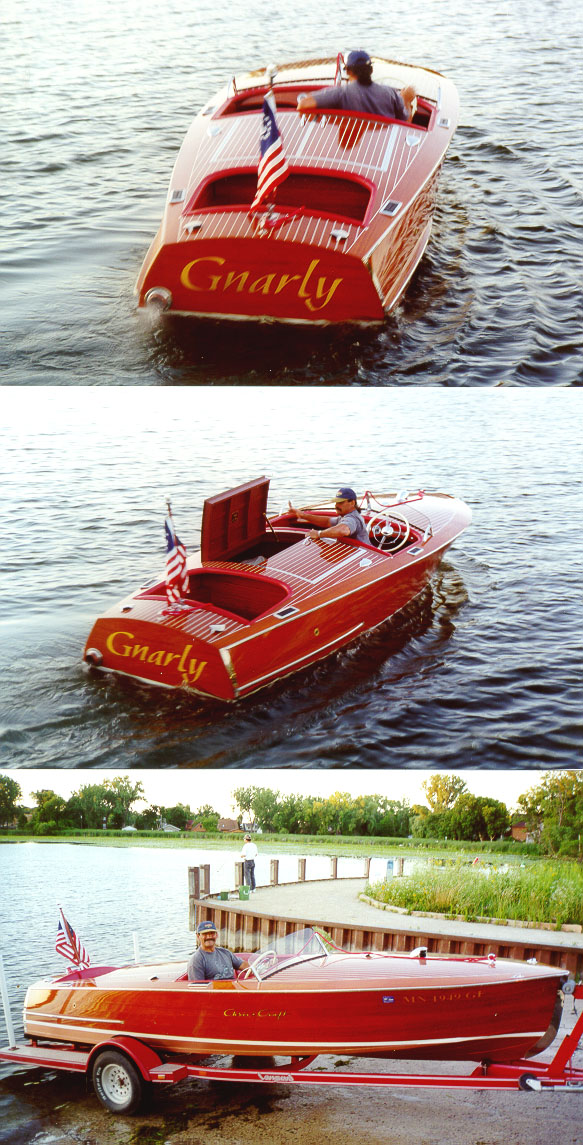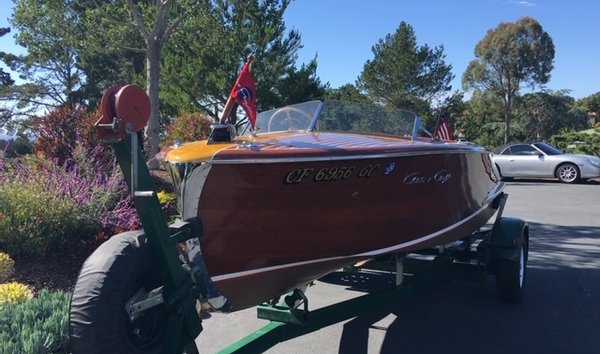
Today, many of the antique Racing Runabouts can be found on or near northern lakes, precisely because of those boathouses (sun is hard on wood) and because in colder climes boats were seldom used more than 40 hours a summer. Instead, they were stored in boathouses, pulled out of the water on pulleys. Smaller and easier to store, most racers did not meet the fate of many larger woodies, left to rot in some marsh or hauled to a garbage dump and burned. By the 1970's the wooden Racing Runabouts were considered passe. A final blow came when fiberglass took over the industry. The assembly-line Chris-Craft won when the custom boat's water-cooled engine lost power because of the sandy river water.īy the mid-1950's Chris-Craft stopped producing the jazzy Racing Runabout, shifting its emphasis to larger leisure crafts with open cockpits, more suited to America's growing families. The contest was between a 19-foot Chris-Craft Racing Runabout and a specially built racer - an archetypal battle between the common man and privileged class. Jack Savage, author of ''Chris-Craft'' (MBI Publishing), said there was even a race down the Colorado River. Races, sanctioned by the American Power Boat Association or informal, were held on summer weekends across the country, from Long Island Sound to Lake Tahoe. In 1949, when wood from the Philippines was available again, the company built the boats in varnished Chris-Craft-grade mahogany (actually, a mahogany relative called luan). Some claim that this was a patriotic gesture to attract returning G.I.'s, but most historians believe they were painted because of the materials used - fir and cedar rather than the mahogany so prized for brightwork. The 19-foot Racing Runabout was the speedster of the line, painted red-and-white or blue-and-white. Wright said.Īfter World War II Chris-Craft became the largest manufacturer of wooden motorboats. ''Chris Smith wanted to put a boat in every boathouse.'' Unlike Gar Wood, which produced runabouts one at a time, with the same crew working on every detail of the boat, Smith broke down the assembly into teams. ''Henry Ford wanted to put a car in every garage in America,'' Mr. Cigar-smoking Chris Smith, the founder of Chris-Craft, took a lesson from Detroit and built the first standardized runabout in 1922. By the 1920's, several companies vied for the trade. Wright said, the first racing runabouts were custom-built for gentlemen boaters on the St. Going fast is what these wooden boats are all about. ''I figure, conservatively, it will go 55 to 57 miles per hour.'' He set to work rebuilding and installing a small block Chevrolet 350 Ci-250 horsepower engine with a Holley carburetor. Steward, a stockbroker who also judges classic boat shows. Restorers rebuilt the bottom and deck for Mr. ''It was a basket case when I found it eight years ago,'' said Gil Steward, who donated the boat for the auction to benefit the New Hampshire Antique and Classic Boat Museum on Lake Winnipesaukee. One, a 1953 Chris-Craft Racing Runabout, is expected to fetch $25,000 to $35,000 at the New Hampshire Antique and Classic Boat Auction on June 17 at Moody Mountain Farm in Wolfeboro, N.H. Boats in excellent condition but lacking what judges term ''originality,'' because owners have added souped-up motors or improved controls, are also popular.

''They were the Corvettes, the Thunderbirds of their era,'' he said.Īnd like their automotive counterparts, they can fetch high prices, as much as $50,000 for a show-quality boat with original hardware and motor. Wright, the executive director of the Chris-Craft Antique Boat Club, which is based in Tallahassee, Fla. It is just such early memories that have made the 19-foot Chris-Craft Racing Runabout one of the most popular classic boats in the United States, according to Wilson W. I was thrilled: this must be what astronauts felt, shooting though space. The long sleek bow with its racy caulk lines lifted high out of the water phosphorescent spray flamed by the low freeboard like galaxies of stars. We roared into the night, the acceleration jamming me back into the red vinyl cushions. On the bay, he smiled as he opened the throttle full. But when a friend invited me for a spin on his father's gleaming wooden motorboat, I hopped in.Ī deft captain, my friend's father smoothly maneuvered us out of the slip, careful to make no wake. Taking my cues from my father - a sailor and ice-boater - I had disdained ''stinkpots,'' the sailor's term for motorboats. It was mid-August 1959, and Barnegat Bay in New Jersey was pure glass.


I was still in grade school when I had my first ride in a Chris-Craft Racing Runabout.


 0 kommentar(er)
0 kommentar(er)
